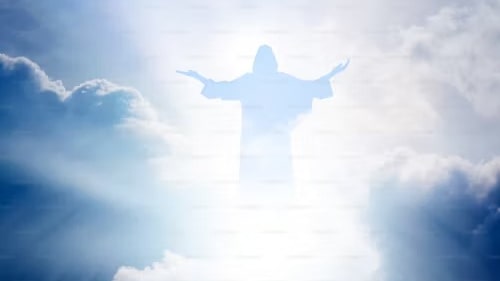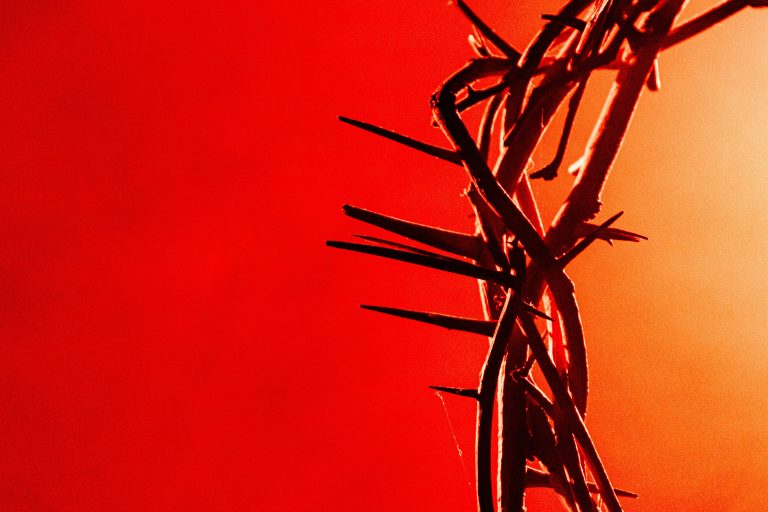The mystery of Palm Sunday and the symbolic act of Jesus riding on a donkey is rich with theological significance, drawing from both Old and New Testament prophecies and pointing to the future establishment of God’s Kingdom. Palm Sunday marks the moment when Jesus, in fulfillment of Scripture, enters Jerusalem in a manner that reveals his kingship, divine mission, and the coming of the Kingdom of Heaven.
Jesus Riding on a Donkey: The King Comes in Humility
The event of Palm Sunday, where Jesus enters Jerusalem riding on a donkey, is a powerful and intentional act filled with symbolic meaning. Jesus’ choice of a donkey instead of a war horse was a sign of peace and humility, rather than a declaration of political revolution. This humble entry fulfilled the prophecy of Zechariah 9:9:
“Rejoice greatly, Daughter Zion! Shout, Daughter Jerusalem! See, your king comes to you, righteous and victorious, lowly and riding on a donkey, on a colt, the foal of a donkey.”
This prophetic fulfillment underscores that Jesus is the promised Messiah, the King, but His kingship is not one of earthly power and domination. His arrival was a declaration of a different kind of Kingdom—one that is spiritual, peaceful, and eternal. The donkey itself symbolizes a humble and peaceful reign, a stark contrast to the expectation of a conquering king who would overthrow Roman rule.
Jerusalem: A Prototype of Heaven
Jesus’ entry into Jerusalem also points to a deeper, symbolic meaning. Jerusalem is often portrayed in Scripture as the place where God’s presence dwells and where His Kingdom will be established. In the Old Testament, the Temple in Jerusalem was considered the dwelling place of God’s glory (1 Kings 8:10-13). In the New Testament, Jerusalem serves as a type of the heavenly city, the place where God’s reign will be fully realized.
In the book of Revelation, the future worship of God in heaven is described, which mirrors the triumphal entry of Jesus into Jerusalem. Revelation 7:9-10 paints a picture of the saints in heaven, worshiping before the throne of God:
“After this I looked, and there before me was a great multitude that no one could count, from every nation, tribe, people and language, standing before the throne and before the Lamb. They were wearing white robes and were holding palm branches in their hands. And they cried out in a loud voice: ‘Salvation belongs to our God, who sits on the throne, and to the Lamb.'”
The waving of palm branches on Palm Sunday foreshadows this scene from Revelation, where the saints in heaven praise God and the Lamb. The palm branches represent an art of worship central both to Palm Sunday and to the worship of God in heaven. On Palm Sunday, the people of Jerusalem lay palm branches before Jesus, recognizing Him as the King. In heaven, the saints will wave palms before God, recognizing His eternal kingship.
The Kingdom of God and the Return of Christ
The idea that Jerusalem is a prototype of heaven is further affirmed in the Scriptures, particularly when considering Jesus’ second coming. Jesus Himself speaks of His return in Matthew 24:30:
“Then will appear the sign of the Son of Man in heaven. And then all the peoples of the earth will mourn when they see the Son of Man coming on the clouds of heaven, with power and great glory.”
This return is not in a far-off, distant place, but specifically in Jerusalem, which will be the focal point of God’s Kingdom on earth. In Acts 1:11, after His ascension, the angels affirm that Jesus will return in the same way He left:
“This same Jesus, who has been taken from you into heaven, will come back in the same way you have seen him go into heaven.”
Jesus’ return will be in Jerusalem, as seen in Zechariah 14:4:
“On that day his feet will stand on the Mount of Olives, east of Jerusalem, and the Mount of Olives will be split in two from east to west, forming a great valley, with half of the mountain moving north and half moving south.”
This passage speaks of the literal return of Jesus to Jerusalem, where He will establish His reign. The city will be the epicenter of God’s Kingdom on earth, a fulfillment of the promise that the Kingdom of God will be established in Jerusalem.
Heaven as God’s Throne and the Earth as His Footstool
Palm Sunday also calls attention to the relationship between heaven and earth as described in Scripture. In the Old Testament, God’s throne is said to be in heaven, and the earth is His footstool. Isaiah 66:1 states:
“This is what the Lord says: ‘Heaven is my throne, and the earth is my footstool. Where is the house you will build for me? Where will my resting place be?'”
This concept reinforces the truth that heaven is the ultimate dwelling place of God, and the earth is merely His creation. The imagery of Jesus riding into Jerusalem on a donkey symbolically links the two realms: heaven (His throne) and earth (His footstool), as He is the King of both. Palm Sunday serves as a reminder that Jesus is the eternal King, reigning from both heaven and earth.
Conclusion
Palm Sunday is a powerful and profound event that encapsulates the themes of Jesus’ kingship, His mission of peace, and the coming Kingdom of God. The act of Jesus riding on a donkey fulfills Old Testament prophecy, signaling that He is the humble King who will establish an eternal, spiritual Kingdom. Jerusalem, as a type of heaven, is the place where Jesus will return to establish His reign on earth, in fulfillment of the promises made in Scripture. The waving of palms foreshadows the heavenly worship of God and the Lamb, as seen in Revelation, further emphasizing the connection between Jesus’ entry into Jerusalem and the ultimate worship that will occur in the heavenly Jerusalem. Palm Sunday, in its deepest mystery, reveals both the present and future aspects of God’s Kingdom, and the central role Jerusalem plays in God’s plan for the world.




